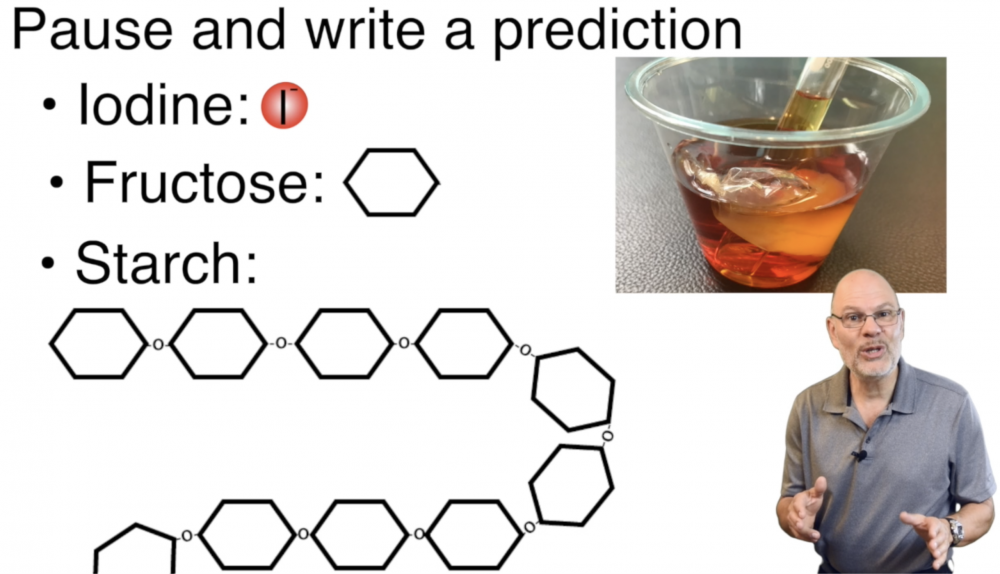If you’re able to do the actual lab, here’s the handout.
If you’re doing the lab virtually (using the material on this page), click the following link to open a copy of a google doc version of this virtual lab.
Introduction
What follows is video version of a classic biology lab that demonstrates the concepts of selective permeability and diffusion,.
Here are some of the materials:
- dialysis tubing
- fructose/starch solution
- iodine
- a fructose/glucose test strip to indicate the presence of a monosaccharide.
Here are a few key concepts and definitions that’ll help you understand what you’ll observe below.
- Selectively permeability is a key property of cell membranes. Membranes that are selectively permeable allow some substances to pass through, but not others.
- Diffusion is the movement of fluid substances from where they’re highly concentrated to where they’re less concentrated.
- Dialysis tubing is an artificial selectively permeable membrane.
Part 1: The Setup, and Your Initial Prediction
1a. Write it down, Prediction and Justification
Here’s an image that shows the initial setup. A starch/fructose solution is inside the dialysis bag. Iodine solution is outside of the bag.

PREDICT what will happen overnight? How might this system change over 24 hours? What will happen to the starch? The iodine? The fructose? Whatever you predict, provide a justification.
Part 2: Interpreting the Results
2a. Write it down, part 2: Claim, Evidence and Reasoning
Here’s a table showing the results.

Based on these results, what is the dialysis tubing permeable to? What’s it impermeable to?
- Make a claim (answer the questions immediately above).
- Support your claim with evidence.
- Show your reasoning
Part 3: Explaining What Happened
3a. Discussion Questions
Before you write, talk it through. Based on your teacher’s instructions, discuss these questions (with a partner, in a breakout room, etc.)
- At the start of the experiment, where was the starch more concentrated? Based on diffusion, where would the starch “want” to go?
- Did the starch diffuse through the bag? How do you know?
- Is the bag permeable to starch? Explain.
- At the start of the experiment, where was the iodine more concentrated?_____________ Based on diffusion, where did the iodine “want” to go?
- Did the iodine diffuse through the bag? How do you know?
- Is the bag permeable to iodine? Explain.
- At the start of the experiment, where was the fructose more concentrated?________________. Based on diffusion, where did the fructose “want” to go?
- Did the fructose diffuse through the bag? How do you know?
- Is the bag permeable to fructose? Explain. Think about the molecular makeup of starch, fructose, and iodine (an ion). How can this explain what happened?
- If starch, fructose, and iodine were various types of balls, and the bag were like a chain-link fence, then what kind of balls would starch, fructose, and iodine be?
- Since the membrane was permeable to _______ and __________ but not to __________, we can say that it is ________________ permeable.
- We did this lab because the dialysis bag is like a cell membrane. How?
3b. Write Up
Now take the results of what you’ve learned above, and answer the questions below.
Describe what happened in this diffusion/membrane model lab. Make sure that you cover all the questions below
- Define the term “diffusion,” and explain why diffusion occurs.
- Briefly explain how we set up this diffusion demonstration.
- Explain what observations we made that told us which substances were diffusing in which direction.
- Explain how this lab relates to the concept of selective permeability.
- Explain how this lab relates to cell membranes
